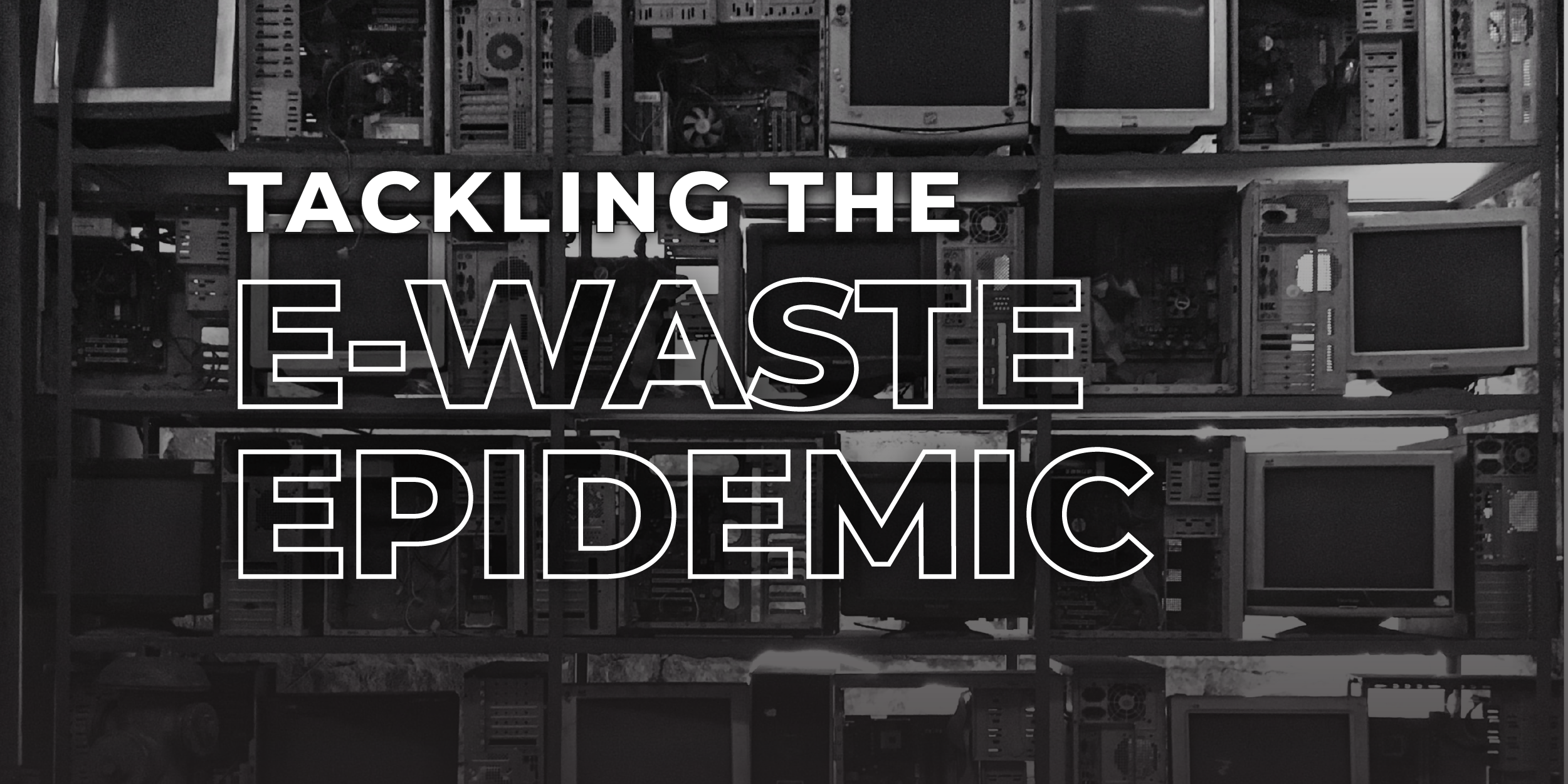
Tackling The E-Waste Epidemic
According to the research carried out by Global Recycling Foundation, electronic waste is projected to be one of the greatest threats to planet Earth. A study conducted by the United Nations showed that about 53 million metric tons of electronic waste are generated every year, and the amount will grow more than 2x by 2050.
E-waste is quickly pacing to be the fastest-growing stream of waste worldwide. Waste from televisions and PC monitors and their internal components with irreplaceable precious metals and hazardous materials like lead, mercury, and cadmium find their way into our waste dumps and landfills, leaching into the soil and our groundwater creating toxic environments.
Although many companies in different countries across the world have taken the initiative to tackle e-waste, they are unable to deal with the mountains of waste arriving at their ports each passing year. These companies together recycle about 10 million metric tons of electronic waste every year.
Burning e-waste can release over 100 million metric tons of carbon dioxide emissions into the air. Thus, burning the waste without effectively tackling it is supremely harmful to the atmosphere. The next question, of course, is how we can tackle electronic waste. Before we proceed, here’s an interesting fact.
Did you know?
A large portion of what is labeled as ‘electronic waste’ is not actually waste? Yes, that’s right. It contains parts or whole electronic equipment that can be resold for use in the secondary market or can be recycled. Constant tech upgrades are one of the biggest contributors to the ever-growing electronic waste.
THE CAUSE
Devices such as: computers, tablets, and mobile phones have truly become disposable. As technology advances, devices become obsolete and end up in our garbage, and a new model is purchased - and the cycle repeats. It is part of the global culture to buy new and toss old. People can hardly resist buying faster and better technology, and this has created a global waste challenge. Although innovations that slim down the amount of e-waste generated are gradually increasing, they also pose a significant challenge. Research shows how such products can be hard to repair and recycle.
While surveys and research into e-waste show that the numbers are rising globally, it’s interesting to note that they are on the decline in the United States of America.
SO WHAT'S THE WAY OUT?
Recycling already-used electronics
Surveys into the purchasing and recycling trends of electronics in the United States of America have shown that only 35% of the e-waste in the USA is recycled. Often, households do not know where and how to recycle the discarded products. If we let electronic devices sit and decompose in landfills, there are high chances of the hazardous compounds leaching into the groundwater. This poses critical health risks to wildlife and people.
Electronics also contain rare precious metals and minerals often obtained from mining in ecologically and socially vulnerable areas in the world. E-recycling also spells good for these areas as the demand for these minerals will be reduced. Further, the recycling industry can be a significant source of employment and revenue streams.
Over the past 10 years, a strong market for used and old technology has evolved… what is old for some, is new for others and as such has created a global industry conducive to the refurbishing and reselling of used technology, ultimately lengthening the life of a device. Effective and safe recycling methods have emerged, as well, so when a device has reached its end of life, it can be responsibly disposed of.
When discussing electronic recycling, we can turn to the SERI - Sustainable Electronics Recycling International. This group runs very strict regulations regarding e-waste, and tech companies can become certified in their methods. When disposing of your used tech, look for companies with R2 (Responsible Recycling) certifications and you can have peace of mind that you will not be contributing to the global e-waste problem.
Disassembling for the win
Additionally, the health and environmental risks posed by massive electronic waste generation have led to the enactment of e-waste recycling laws by the District of Columbia and 25 states of the USA. Some of the key measures brought into implementation to tackle e-waste include:
- Ban on dumping electronic waste in landfills
- Recycling efforts to be supported by manufacturers etc.
These laws majorly target large electronic products like old cathode-ray tube televisions, which may contain up to four pounds of lead.
WRAPPING UP
Today’s world sees a huge demand for responsive e-waste laws rather than patchy state-wide regulations. To fully tackle e-waste, governments will need to come together and establish convenient and certified recycling locations focused on keeping electronics from being dumped in landfills. Steps like these are necessary in keeping nature's balance in check. Protecting our health, environment, and the next generations is a responsibility that everybody must consciously take upon!


